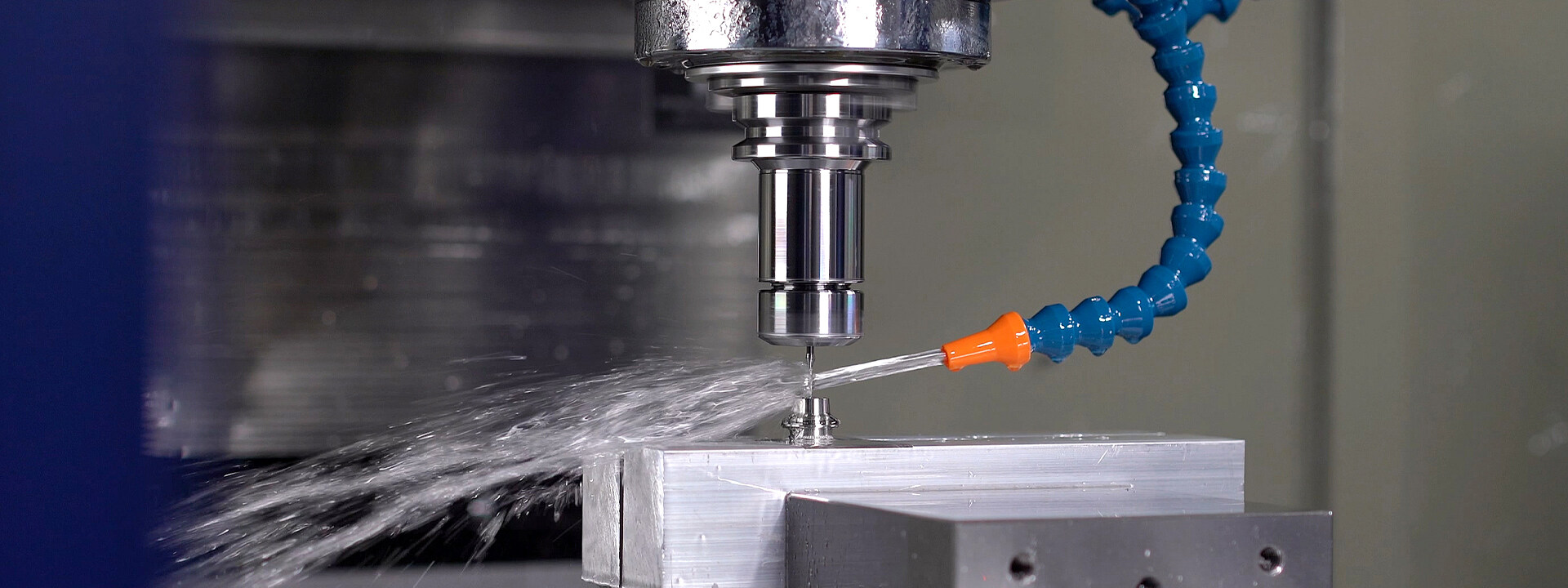Email format error
Email cannot be empty
Email already exists
6-20 characters(letters plus numbers only)
The password is inconsistent
Email format error
Email cannot be empty
Email does not exist
6-20 characters(letters plus numbers only)
The password is inconsistent


The Rise of China’s 3D Printing Service: Innovation, Efficiency, and Future Trends
The Rise of China’s 3D Printing Service: Innovation, Efficiency, and Future Trends
In recent years, China has emerged as a global leader in 3D printing services. This technological revolution is reshaping industries worldwide, offering new possibilities in manufacturing, design, and innovation. From prototyping to mass production, China’s 3D printing service is setting new standards and pushing boundaries.
What is 3D Printing?
Before diving into China's advancements, it’s essential to understand what 3D printing entails. Also known as additive manufacturing, 3D printing involves creating three-dimensional objects from a digital file. This process builds objects layer by layer, allowing for intricate designs and rapid prototyping. Unlike traditional manufacturing methods that involve subtracting material from a larger block, 3D printing adds material precisely where needed.
China’s 3D Printing Revolution
China has made remarkable strides in 3D printing technology, positioning itself as a powerhouse in this industry. The country’s advancements are driven by a combination of government support, investment in research and development, and a burgeoning entrepreneurial spirit. Here’s a closer look at how China is transforming the 3D printing landscape:
1. Government Support and Investment
The Chinese government recognizes the strategic importance of 3D printing technology and has been actively supporting its development. Policies and initiatives aimed at promoting innovation in manufacturing technology have created a conducive environment for 3D printing companies. Investments in research and infrastructure have helped accelerate the growth of the industry.
2. Cutting-Edge Research and Development
China’s commitment to research and development in 3D printing technology is evident in its growing number of patents and technological advancements. Chinese researchers and engineers are exploring new materials, enhancing printing speeds, and improving the accuracy of 3D printers. This relentless pursuit of innovation is driving the country to the forefront of the global 3D printing market.
3. Diverse Applications and Industries
One of the most exciting aspects of China’s 3D printing service is its wide range of applications. The technology is being used in various industries, from aerospace and automotive to healthcare and fashion. In aerospace, for example, 3D printing is employed to create lightweight and complex components, reducing material waste and production costs. In healthcare, custom prosthetics and implants are being developed with remarkable precision.
4. Rapid Prototyping and Customization
China’s 3D printing service is particularly renowned for its rapid prototyping capabilities. This allows businesses to create and test prototypes quickly and cost-effectively, speeding up the product development process. Customization is another key advantage, as 3D printing enables the production of bespoke products tailored to individual needs and preferences.
5. Cost Efficiency and Accessibility
The cost efficiency of 3D printing is transforming the manufacturing landscape. Traditional methods often require expensive molds and tooling, whereas 3D printing reduces these costs by eliminating the need for complex machinery. This accessibility is democratizing manufacturing, allowing small and medium-sized enterprises to compete with larger players.

The Future of 3D Printing in China
Looking ahead, the future of 3D printing in China appears promising. Several trends and developments are set to shape the industry:
1. Expansion into New Materials
As technology advances, the range of materials used in 3D printing is expanding. China is at the forefront of developing new materials that offer enhanced properties, such as improved strength, flexibility, and sustainability. Innovations in biodegradable and recyclable materials are also contributing to more environmentally friendly manufacturing practices.
2. Integration with Artificial Intelligence
The integration of artificial intelligence (AI) with 3D printing is expected to revolutionize the industry further. AI can optimize printing processes, predict potential issues, and enhance design capabilities. This synergy between AI and 3D printing will likely lead to more sophisticated and efficient manufacturing solutions.
3. Increased Adoption in Healthcare
The healthcare sector is poised for significant advancements due to 3D printing. China’s expertise in creating customized medical devices, implants, and prosthetics is set to grow, improving patient outcomes and expanding treatment options. The potential for personalized medicine through 3D printing is an exciting prospect for the future.
4. Development of Large-Scale 3D Printing
Large-scale 3D printing is gaining traction, with applications ranging from building construction to aerospace components. China is exploring the potential of 3D printing to create entire buildings and infrastructure elements. This technology could revolutionize construction methods, making them more sustainable and efficient.
5. Global Collaboration and Export Opportunities
China’s advancements in 3D printing are not limited to its borders. The country is increasingly collaborating with international partners and exporting its technology and services worldwide. This global approach will contribute to the spread of 3D printing innovations and establish China as a key player in the global market.
The Economic Impact of China’s 3D Printing Services
The economic implications of China’s dominance in 3D printing are significant and multifaceted. The technology is not only boosting local economies but also influencing global trade dynamics. Here’s a closer look at how China’s 3D printing industry is affecting the economy:
1. Job Creation and Skill Development
The expansion of the 3D printing sector in China is creating a wealth of new job opportunities. From skilled technicians and engineers to design experts and materials scientists, the industry demands a diverse range of talents. This surge in employment is contributing to economic growth and fostering skill development among the workforce. Educational institutions and training programs are evolving to meet the growing need for expertise in 3D printing technology.
2. Economic Diversification
China’s 3D printing services are aiding in the diversification of its economy. Traditionally reliant on manufacturing and export-driven growth, China is leveraging 3D printing to innovate and compete in high-tech industries. This diversification is making the economy more resilient and less dependent on any single sector, contributing to long-term stability and growth.
3. Global Trade and Export Opportunities
China’s advancements in 3D printing are opening up new avenues for global trade. As Chinese companies develop cutting-edge technologies and solutions, they are increasingly exporting these innovations to other countries. This not only enhances China’s position as a technology leader but also stimulates international partnerships and trade relationships.
4. Investment Opportunities
The booming 3D printing sector is attracting substantial investment from both domestic and international sources. Venture capitalists, private equity firms, and government agencies are pouring resources into 3D printing startups and established companies. This influx of capital is accelerating research and development, leading to further technological advancements and market expansion.
Environmental Considerations
As with any technological advancement, the environmental impact of 3D printing is an important consideration. China is addressing these concerns by focusing on sustainable practices and innovative solutions:
1. Reduction of Material Waste
One of the notable environmental benefits of 3D printing is its ability to minimize material waste. Traditional manufacturing methods often involve cutting away excess material, whereas 3D printing adds material only where needed. This efficiency in material usage contributes to a reduction in overall waste.
2. Development of Eco-Friendly Materials
China is at the forefront of developing eco-friendly materials for 3D printing. Biodegradable plastics, recycled materials, and low-impact resins are being explored to reduce the environmental footprint of 3D printing processes. These advancements align with global sustainability goals and promote responsible manufacturing practices.
3. Energy Efficiency
While 3D printing processes require energy, ongoing research is focused on enhancing energy efficiency. Innovations in printer design and process optimization are aimed at reducing energy consumption. Moreover, integrating renewable energy sources into 3D printing operations can further decrease the environmental impact.
Success Stories and Case Studies
Several success stories highlight the transformative potential of China’s 3D printing services across various sectors:
1. Aerospace Industry
Chinese aerospace companies are leveraging 3D printing to manufacture lightweight and complex components. The ability to produce high-strength parts with reduced weight is enhancing the performance and efficiency of aircraft. Notable achievements include the development of 3D-printed jet engine components and structural elements for spacecraft.
2. Healthcare Sector
In healthcare, China’s 3D printing services have led to significant breakthroughs. Customized prosthetics and implants are being created with unprecedented precision, improving patient outcomes. A notable example is the use of 3D-printed patient-specific surgical models, which aid in planning and executing complex surgeries.
3. Architecture and Construction
The architecture and construction industries are also benefiting from China’s 3D printing advancements. Large-scale 3D printers are being used to create building components and even entire structures. Innovative projects, such as 3D-printed housing and modular construction elements, are demonstrating the potential for more efficient and sustainable building practices.
Challenges and Future Outlook
Despite the many benefits and advancements, China’s 3D printing industry faces several challenges:
1. Intellectual Property Concerns
The rapid growth of 3D printing has raised concerns about intellectual property (IP) protection. The ease of copying and replicating designs can lead to IP infringements and disputes. Addressing these concerns requires robust legal frameworks and industry standards to safeguard innovations.
2. Technological Barriers
While significant progress has been made, there are still technological barriers to overcome. Issues such as print speed, material limitations, and quality control need continuous improvement. Ongoing research and development efforts are crucial to addressing these challenges and pushing the boundaries of what 3D printing can achieve.
3. Market Competition
As the 3D printing market grows, competition is intensifying. Companies must innovate and differentiate themselves to stay ahead in this competitive landscape. Strategic partnerships, investment in R&D, and a focus on niche applications can help companies maintain a competitive edge.
Conclusion
China’s 3D printing service is a testament to the country’s innovative spirit and commitment to technological advancement. The industry is driving economic growth, revolutionizing various sectors, and paving the way for a more sustainable and efficient future. As China continues to lead in 3D printing technology, the global impact will be profound, offering new possibilities and reshaping industries worldwide.
The rise of 3D printing in China is not just a story of technological progress; it’s a narrative of transformation, opportunity, and innovation. As we move forward, the potential for 3D printing to address complex challenges and create new solutions will undoubtedly shape the future of manufacturing and design. China’s journey in 3D printing exemplifies how a nation’s vision and investment in technology can lead to groundbreaking achievements and set the stage for a brighter, more dynamic future.

